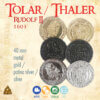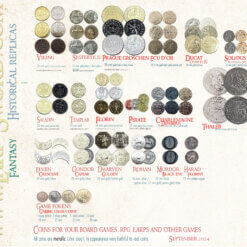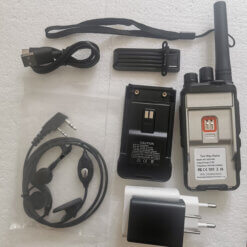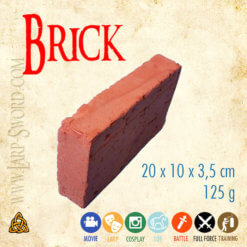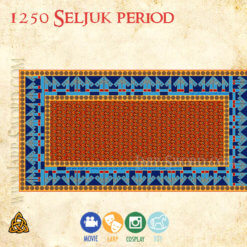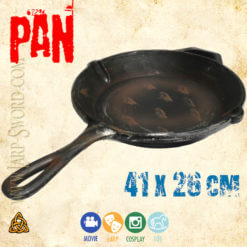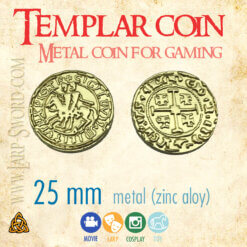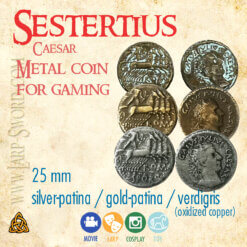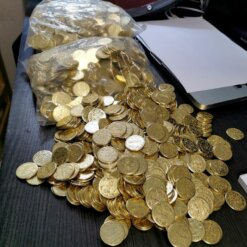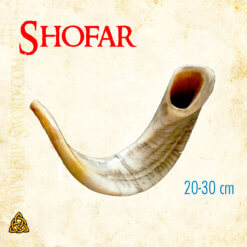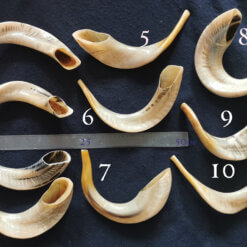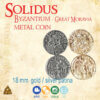Byzantine Solidus – Replica Coin
$0.69 – $41.40Price range: $0.69 through $41.40
A faithful replica of the Byzantine Solidus coin, based on a 9th-century find from Great Moravia.
Diameter: 18 mm.
Material: zinc alloy.
Description
The Byzantine Solidus replica is a precise historical reproduction based on a coin found in Great Moravia in the 9th century.
Diameter: 18 mm
Material: zinc alloy
The solidus (Latin for “solid, reliable coin”) was the standard Roman gold coin. It remained in use throughout Late Antiquity and the Early Middle Ages, with its weight and purity maintained from the 4th to the 11th century.
First introduced by Emperor Diocletian in 301, the solidus was reintroduced by Constantine the Great in 312, replacing the aureus as the imperial gold coin. It became a trusted currency across the Roman and Byzantine Empires and beyond, spreading into Frankish, Moravian, and Arabic lands. Its name survives in modern European currencies, from the Italian soldi to the French sou and the English shilling.
This faithful replica brings the weight of history into your hands – ideal for collectors, board games, RPGs, and reenactment.
Additional information
| Color | Gold, Patina silver |
|---|---|
| Množství v balení | 1 pc, 10 pcs, 100 pcs |
| Žánr/období | Medieval |
Related products
Coins
Props



